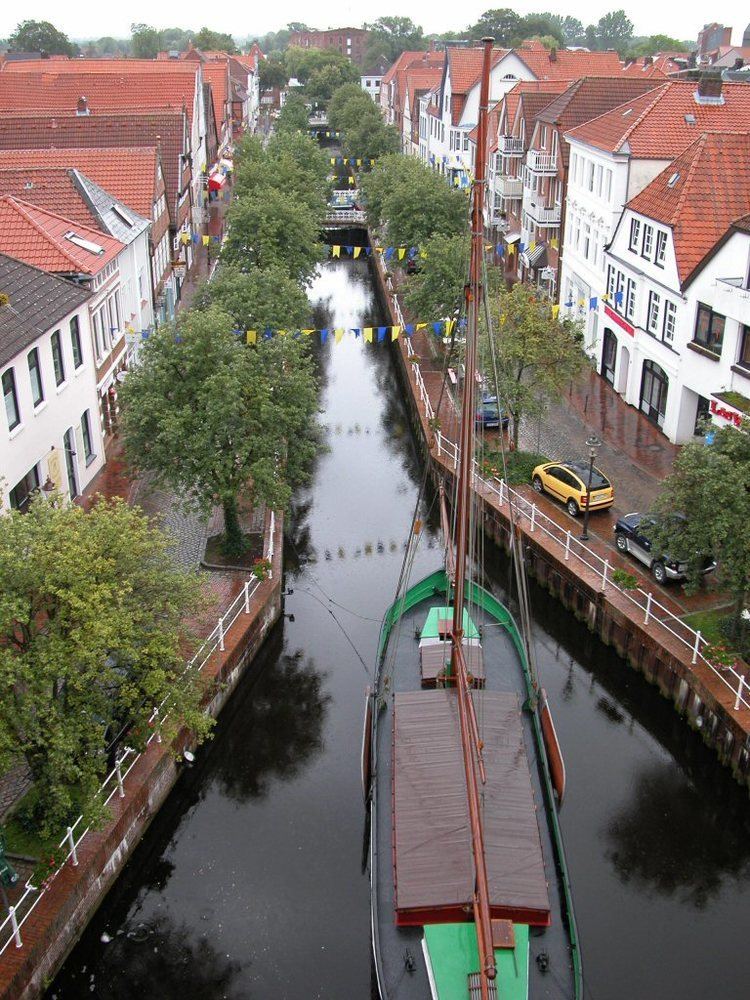District Stade Time zone CET/CEST (UTC+1/+2) Area 76.49 km² Local time Tuesday 8:23 PM University University 21 | Elevation 5 m (16 ft) Postal codes 21614 Population 39,522 (31 Dec 2008) Postal code 21614 | |
 | ||
Weather 2°C, Wind NW at 5 km/h, 81% Humidity | ||
Nice city of buxtehude in germany
Buxtehude ( [bʊkstəˈhuːdə]) is a town on the Este River in Northern Germany in the district of Stade and part of the Hamburg Metropolitan Region (Metropolregion Hamburg). Buxtehude is a steadily growing medium-sized town and the second largest in the district of Stade. It lies on the southern borders of the Altes Land within easy reach of the city-state of Hamburg. West of it are the towns of Horneburg and Stade and to the south there are incorporated villages offering mostly upscale housing, e.g. Ottensen and Apensen.
Contents
- Nice city of buxtehude in germany
- Map of Buxtehude Germany
- History
- Economy
- Companies
- Culture
- Museums
- Local dialects
- Tourism
- Education
- Transport
- Sister cities
- Sons and daughters of the city
- Personalities associated with Buxtehude
- References
Map of Buxtehude, Germany
History
Early signs of settlements are the Daensen folding chair from a Bronze Age tumulus near Daensen and the Ovelgönne bread roll from the Pre-Roman Iron Age of Northern Europe, which was found in a loam mine in Ovelgönne.
Economy
Since 1881 Buxtehude has had its own railroad station on the R50 line between Hamburg and Cuxhaven. In late 2007 this line was added to the rapid transit system of the Hamburg S-Bahn by the HVV.
Since 1928 there has also been a second railroad line crossing Buxtehude, the EVB, (Eisenbahn- und Verkehrsbetriebe Elbe-Weser, Zeven) between Hamburg's outermost district and Bremerhaven on the coast of the North Sea. The Este river connects the town to the important Elbe river 6 miles north. Earlier in history this connection was used to ship goods into the small harbour, which still exists but has become less accessible due to town developments and aggradation.
A major highway, scheduled for completion in 2012, is to connect the town to Hamburg.
Companies
Several major companies are located in Buxtehude:
Culture
Buxtehude is sometimes referred to as the "The Fairytale Capital" of the world, an epithet that it shares with e.g. Kassel. The tale of "The Hare and the Hedgehog" by the Brothers Grimm is set in this town. Furthermore, the name is used in numerous German tales. And thus some people claim that the town of Buxtehude does not actually exist. The German saying "...nach Buxtehude jagen" (literally: "to hunt somebody to Buxtehude") means to exile someone to a far-away place.
Museums
Local dialects
German and Low Saxon, which is rarely spoken now but can be still heard spoken by older people. Also one of the local high schools Halepaghen-Schule holds a Low German reading contest each school year.
Tourism
Buxtehude enjoys a good reputation as a warm, visitor-friendly town preserving its cultural and regional heritage without denying the future. Besides the beautiful old part of town, the main church of Sankt Petri (St. Peter) and the Zwinger are great places to pay a visit to. The Altes Land adjacent to Buxtehude and the close Elbe river serve as great get-aways for a bicycle tour or a long hike. Buxtehude can as well be used as a hub for tours to the nearby cities of Hamburg and Bremen.
For the interested visitor, some events held every year:
The Pistennacht is an event where bars, restaurants and clubs in the old part of town are open all night long. A stage downtown and some individual places offer live music.
The Pfingstmarkt is a fair in northern Germany along the national highway B73. It is always held on the Christian holiday of Pentecost (German: Pfingsten) exactly 50 days after Easter close to Buxtehude. It features 135 exhibitors with many rides including a Ferris wheel and bumper cars as well as lottery booths, snack booths and sit-down food locations. In 2004 140,000 visitors flocked to the fair compared to 10,000 in 1904 and 100,000 in the 1970s.
Like the Pistennacht, the Altstadtfest (literally: Old town festival) is held downtown. Every year on the first weekend of June the whole old part of town turns into a party with several stages with live music. Sunday morning the town's biggest flea market is held around the Fleth. For the occasion of Altstadtfest the town is decorated in its municipal colours of blue and yellow.
Vinum is the motto for the annual celebration of wine in old town Buxtehude. For one weekend the town dedicates itself to culture of wine and many booths for wine testing and entertainment open.
Christmas market is held in the month of December in the Altstadt area with the highlight being mulled wine and bratwurst stalls. Various music concerts are also held at the St. Peter's square on the weekend before Christmas.
Education
Transport
Buxtehude is served by the Hamburg S-Bahn with the stations Buxtehude and Neukloster; and by the Bundesstraße 73, a national highway.
